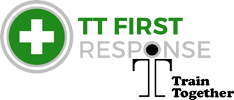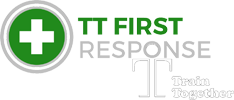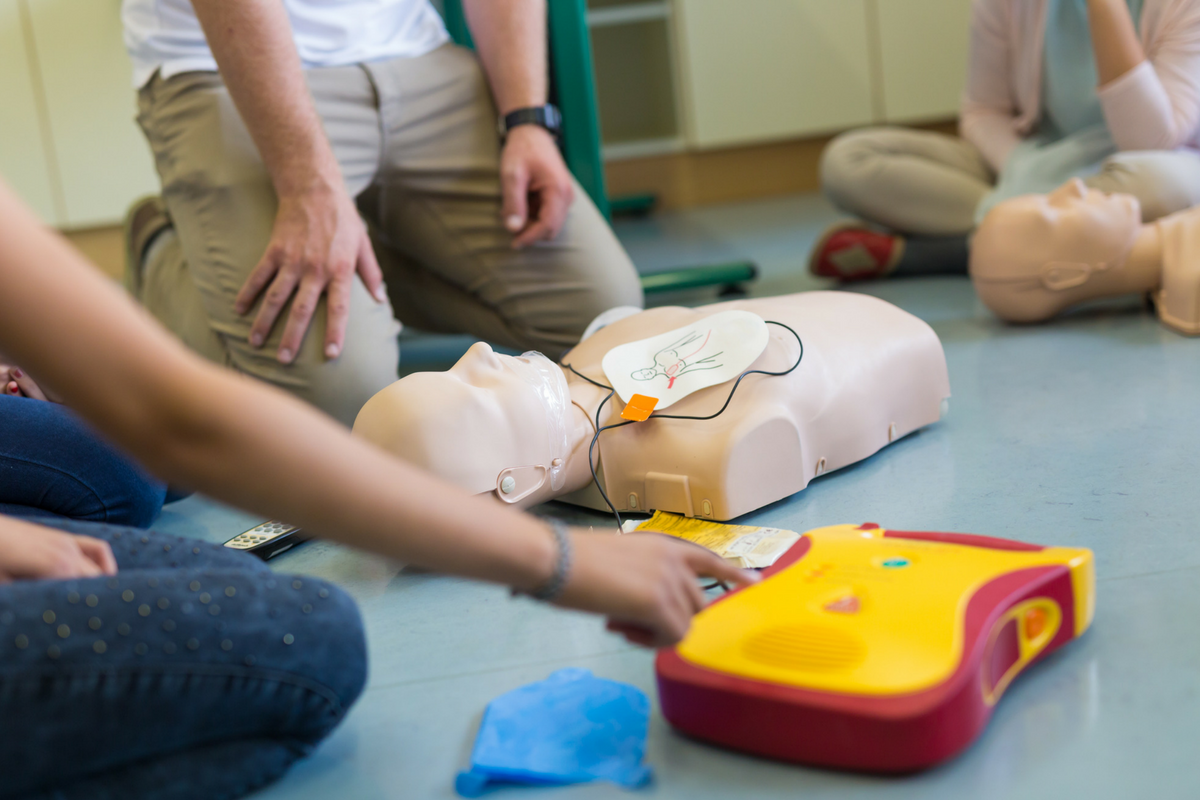All of our first aid courses at Train Together include CPR and AED training.
Knowing how to administer CPR and use a defibrillator (AED) is essential in increasing the chances of survival for a person who collapses because of cardiac arrest.
We’ve put together this handy Q&A for you to discover the basics around using a defibrillator and carrying out CPR.
We hope this acts as a helpful introduction, but to equip yourself with the proper know-how to react appropriately in a situation where someone has stopped breathing, you should take a CPR and AED course like this one.
What is a defibrillator?
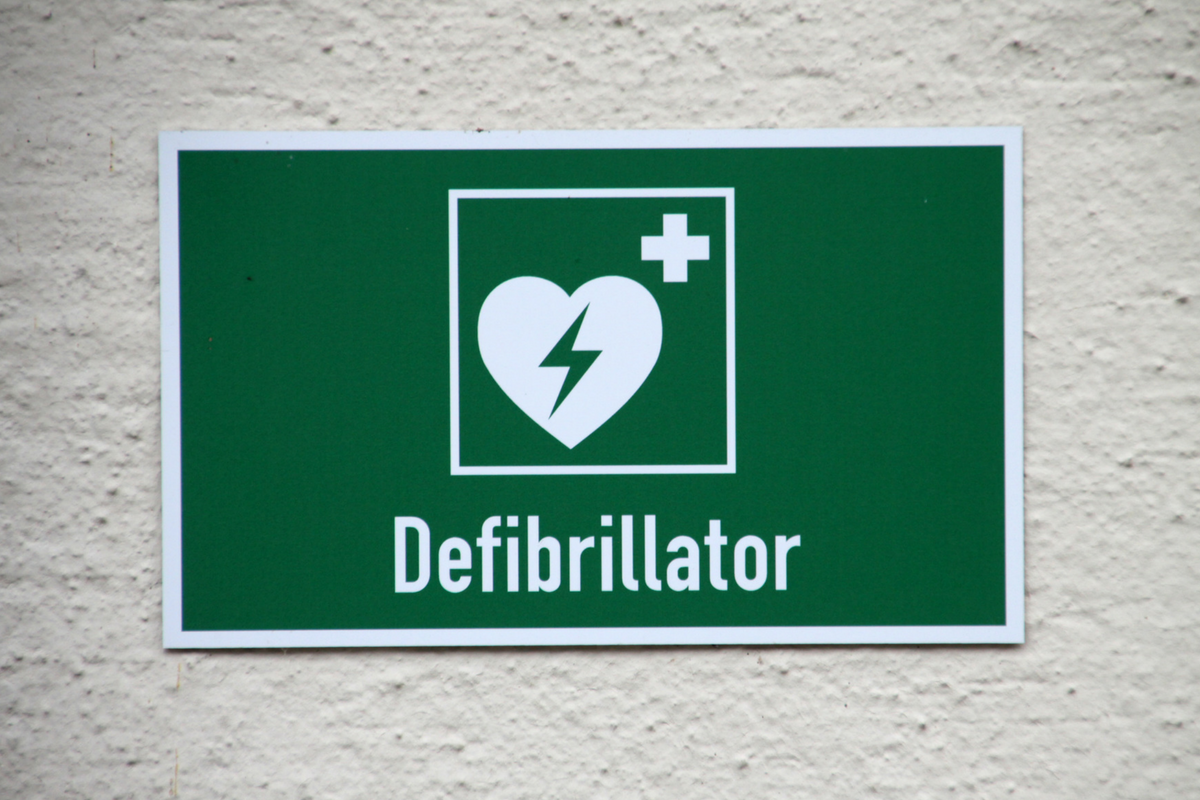
A defibrillator (also referred to as an AED) is a device that, when placed on the body correctly, sends an electric shock to the heart of someone who is in cardiac arrest. This is done in an attempt to save the life of the patient by restoring a regular heartbeat rhythm.
If you do come across someone in cardiac arrest, it’s important to call 999 and, if instructed to, start CPR immediately. You should then look for a nearby defibrillator, or if possible ask someone else to do so while you continue to administer life-saving CPR.
How do you use a defibrillator?
Most modern defibrillators provide audio instructions once you have turned them on.
If an AED is required, you will need to attach the AED’s adhesive pads to the patient’s bare chest. The AED will then be able to read and monitor the patient’s heartbeat and provide a shock if and when it is needed. Some AEDs do this automatically, but some will tell you to press a button in order to administer the shock.
Can anyone use a defibrillator?
You shouldn’t be afraid of using a defibrillator on someone in cardiac arrest if the emergency services have advised you to do so whilst you wait for them to arrive.
Modern AEDs will not allow a shock unless it is needed, so it is highly unlikely that you will cause any more harm to a person who has collapsed and isn’t breathing. Instead, you are more likely to be providing the person with life-saving treatment in the critical first few minutes after cardiac arrest until the emergency services arrive.
Where can I find a defibrillator?
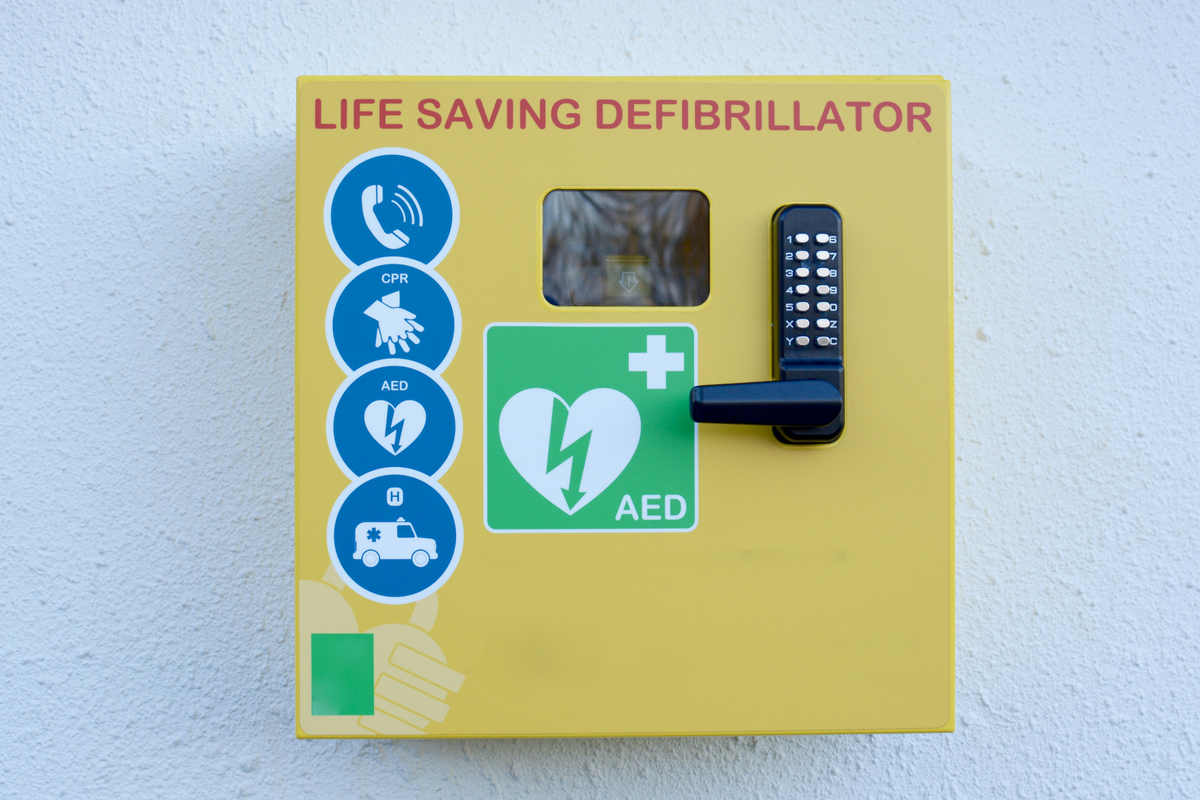
Knowing where the nearest defibrillator is to your home or workplace can save valuable seconds (and possibly someone’s life) should you need to locate it for use in an emergency.
Defibrillators can be found in most public places such as town centres, train stations, swimming pools and public libraries so that they can be accessed quickly and easily.
To find out where the defibrillators are in your local area, take a look at a listing website such as HeartSafe. Some defibrillator cabinets will require unlocking. The emergency services will be able to help you with instructions if the AED has been registered with them.
What is CPR?
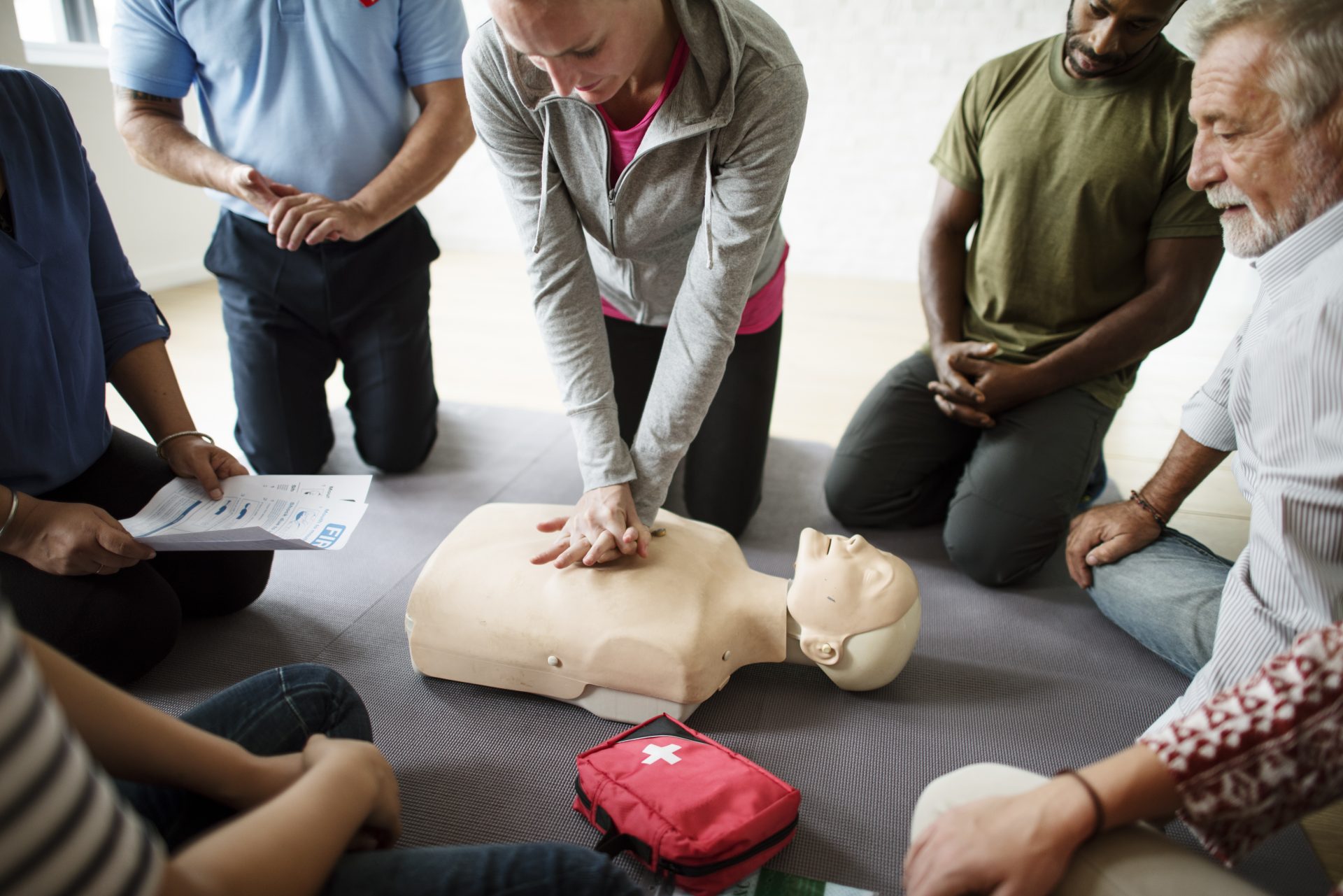
CPR stands for cardiopulmonary resuscitation. It is given to someone who has stopped breathing and is in cardiac arrest. It helps to pump blood around the body while the heart can’t.
Giving CPR is a case of carrying out a series of chest compressions and rescue breaths when a person is in cardiac arrest.
What is a cardiac arrest?
A cardiac arrest is when the heart stops pumping blood around the body to the brain. If this happens, the person will stop breathing and collapse to the floor unconscious. Without CPR, the person is likely to die within minutes.
How do I know when someone needs CPR?
Always call 999 and speak to the emergency services before starting CPR. They will be able to quickly help you establish whether or not you should begin CPR on someone who may need it.
CPR should only be used on someone if they are unconscious and not breathing, or unconscious and not breathing normally.
Where can I get CPR and AED training?
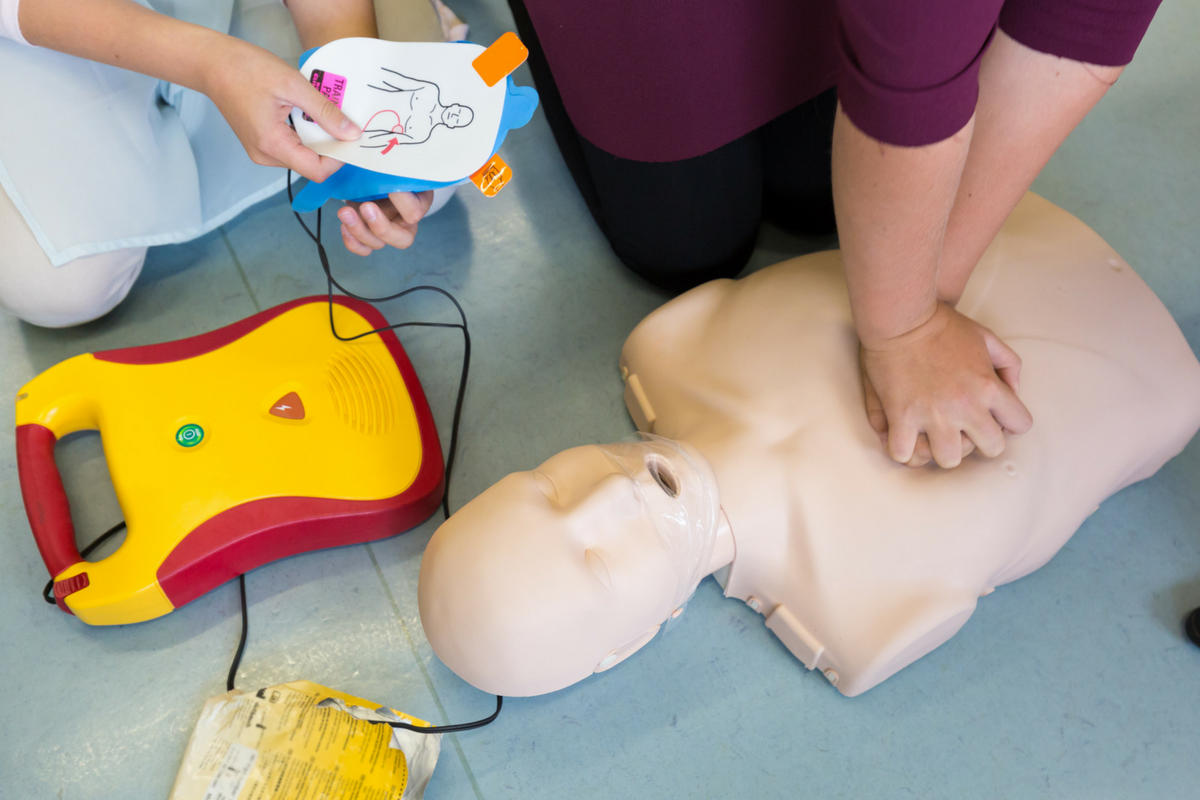
You can get CPR training and learn how to use a defibrillator correctly, including the appropriate steps to take when you come across someone in cardiac arrest, by taking a course.
Here at Train Together our Level 3 First Aid and AED courses explore everything you need to know about CPR and AEDs, and also teach resuscitation and choking procedures.
If you’d like to know more about our range of first aid courses, simply fill in the form below or call us to speak to one of our friendly first aid trainers.
